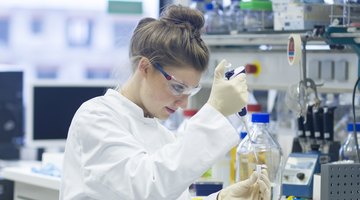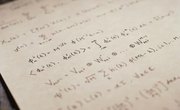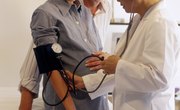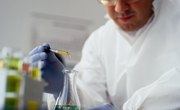Students who are interested in becoming laboratory technicians have to complete an associate degree program in laboratory technology. Community and junior colleges, and four-year colleges and universities offer associate degrees in different areas of laboratory technology. Examples of common options are Associate of Science or Associate of Applied Science degrees in medical laboratory technology, biomedical engineering technology and clinical laboratory technology.
Laboratory Technician Degree
Laboratory technician degree programs typically require students to take 48 to 68 credits of lower-division college coursework. These programs typically take 2 to 3 years to complete, depending on how many courses students take per semester, and whether or not they take courses during the summer sessions. In the first year, students typically take general education requirements and introductory courses in the natural sciences and mathematics. In their second year, students take specific courses in laboratory technology. For example, students who pursue biomedical engineering technology programs take courses such as medical laboratory 1 and 2, medical computing, medical networking and medical imaging.
College Algebra 1
While mathematics is not a large portion of a laboratory technician degree program, laboratory technicians are expected to know a certain amount of mathematics. Most programs require students to take a mathematics placement exam to test their level of math knowledge. Students who take algebra 1 and 2 in high school and do well on the placement exam can go straight into trigonometry or pre-calculus. Students who have been out of high school for many years and/or not adequately prepared for trigonometry first take college algebra 1 and 2. College algebra 1 is an introductory course in algebra that reviews the material covered in high school algebra courses, including integers, variables, slope of a line and introductory topics in equations and inequalities.
College Algebra 2
After completing the first semester of algebra, prospective laboratory technicians typically take college algebra 2. This course is either offered in the second semester of a two-semester course in algebra, or as a separate course called college algebra 2. College algebra 2 builds on the topics introduced in the first algebra course, mainly teaching students how to solve different equations and inequalities. Furthermore, students also learn about radicals, and area and perimeter formulas of different shapes such as triangles, squares, circles and parallelograms.
Trigonometry
In addition to the two-semester course in algebra, prospective laboratory technicians take a semester of trigonometry. Trigonometry, also known as pre-calculus, introduces students to concepts of degrees, angles and finding areas within in a circle. Some trigonometry or pre-calculus courses also cover topics in solving and graphing systems of equations and inequalities. Students who are interested in becoming laboratory technicians, and have adequate preparation and trigonometry or pre-calculus in high school, can opt out of taking all mathematics courses in college by placing into calculus on the mathematics placement exam.
Related Articles
References
Writer Bio
Kate Prudchenko has been a writer and editor for five years, publishing peer-reviewed articles, essays, and book chapters in a variety of publications including Immersive Environments: Future Trends in Education and Contemporary Literary Review India. She has a BA and MS in Mathematics, MA in English/Writing, and is completing a PhD in Education.











